9 Ways to Improve NPS Response Rates
Read More
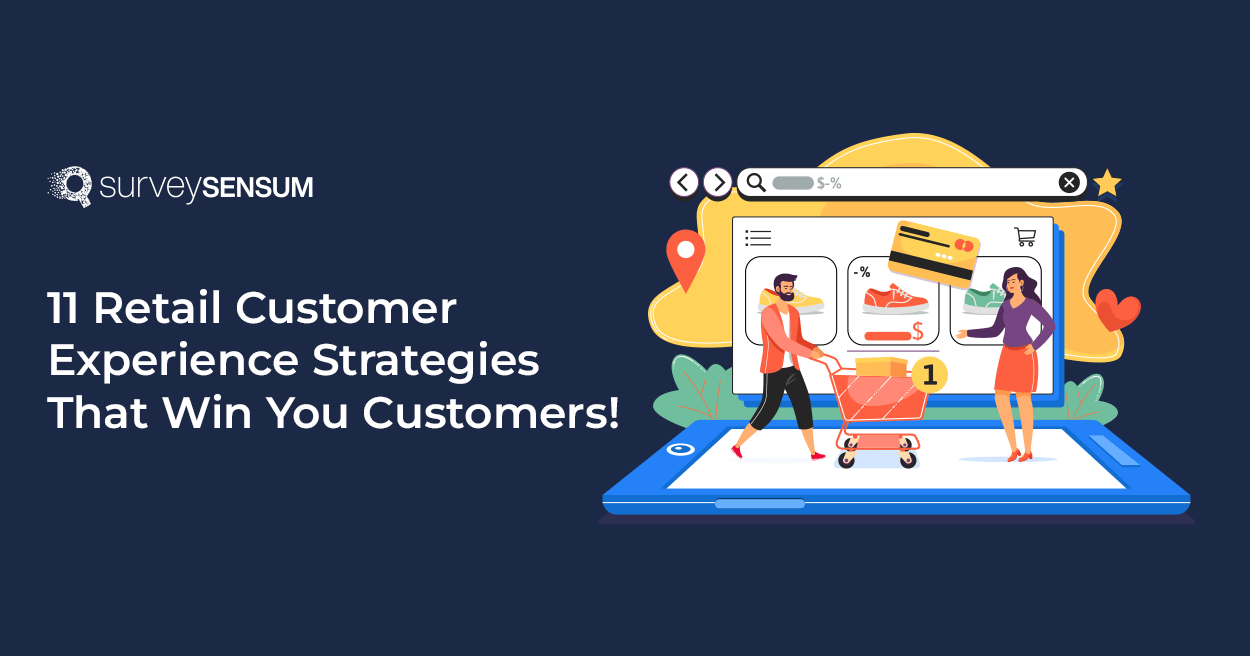
Do you have a favorite brand that you love to shop from even if you have absolutely no shopping requirements but go there just for the experience?
Because I do and that brand for me is IKEA.
Honestly, I go to IKEA whenever I feel bored and have nothing else to do. Why?
Because I love shopping there!
Even if I have absolutely nothing to buy. I love to browse through the different sections, experience new products, sometimes buy items on display and of course, eat their famous meatballs.
Creating a memorable retail shopping experience, both online and in-store, is like taking your customers on an amazing trip so that even after the trip is over they always come back for more.
But how to do that?
By implementing powerful retail customer experience strategies that brands like Amazon, Decathlon, IKEA, etc. have adopted,
So, what are these top winning retail customer experience strategies? And how can you incorporate them?
Let’s talk about each retail customer experience strategy, in detail, by exploring some of the best customer experience stories of the retail industry.
Let’s have a glance at each strategy.
In today’s competitive retail landscape, providing customers with an enjoyable and hassle-free shopping experience is crucial to winning their loyalty. This involves creating a seamless and user-friendly interface for both online and physical stores, as well as incorporating interactive elements that enhance the overall experience, and reduce cart abandoment rates.
Decathlon, a renowned sporting goods retailer, excels in this retail customer experience strategy. They offer an innovative shopping experience by providing in-store test zones where customers can try out sports equipment for different types of triathlons before making a purchase.
This creates an interactive experience that allows the customers to experience the product, test it out and be 100% satisfied with it before purchasing. Customers can play cricket inside their stores, ride cycles, and test out outdoor tents, and other products before purchasing.
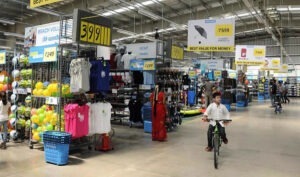
By adopting similar strategies, retailers can create an environment that encourages customers to explore, engage, and enjoy their shopping journey. This ultimately leads to increased customer satisfaction and loyalty, resulting in a competitive edge in the retail industry.
Let me give you a picture of an ideal customer journey.
Imagine – You enter a retail clothing store to buy custom t-shirts. The store entrance is aesthetically pleasing and when you enter the store, the staff greets you warmly. The store layout is so perfectly designed that you didn’t have to ask for directions. You went straight to the t-shirt section and were pleased with their collection. You found a few good ones to buy, added them to your cart, and headed to the checkout area. In the checkout area, you saw a self-checkout booth so you did your own checkout. The payment was also smooth. You packed everything and exited the store satisfied with the experience. The same goes for the brand’s online store.
Sounds too good to be true? Well, yes because brands don’t pay attention to all the important touchpoints in a customer’s journey.
Every interaction your customer has with your brand, both online and offline, provides opportunities for you to ensure a positive experience.
But how to implement it?
In 2020, Amazon launched its Amazon Fresh stores in the USA. This store uses new-age technology to create a seamless shopping experience between the physical store and the customer’s Amazon account.
This store features Amazon Dast Cart Lane. It is one of the best retail customer experience strategies because you’ve to simply enter the store, take the cart out, and put your items into it. The cart has a scanner that will be scanning your items and add them to your Amazon account. Once done, simply pack everything and exit the store. The total amount will be added to your Amazon account where you can pay via Amazon Pay. Cool, right?!
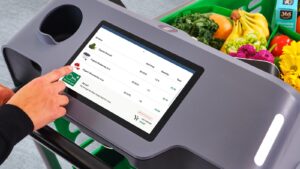
Customers want a shopping experience that caters to their convenience. For them shopping is shopping, no matter the medium.
Here are a few action points for you to implement a seamless shopping experience for your customers:
Who loves waiting in long queues to pay for a simple milk carton?
No one!
Long lines, faulty payment gateway, and no proper order at the checkout process are a horror for anyone. Even when shopping online crashing of the payment page, no confirmation on the order, and no proper communication on delivery is a nightmare.
Optimizing your checkout process is a crucial retail customer experience strategy. According to a report by the Baymard Institute on “Cart Abandonment Stats 2023”, it was found that the average cart abandonment rate is 69.9%.
69% is a lot of customers. So, how to resolve this issue?
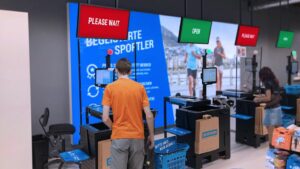
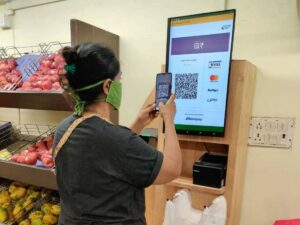
What is preventing your customers from coming back? – Find out with SurveySensum – Request a Demo
The worst feeling in the world, when it comes to shopping is that you find something you like, and it’s not available in your size or color. Frustrating, right?
Your customers also feel the same way when they find items not in stock and this factor might deter them from shopping with you in the future.
Addressing product availability is a key retail customer experience strategy. According to PwC, “Global Consumer Insights Pulse Survey” 42% of customers surveyed cited products being out of stock as their biggest point of frustration.
Keeping your inventory stocked will ensure that your customers have a prompt buying experience and exit your store happy and satisfied. And here’s how you can do that.
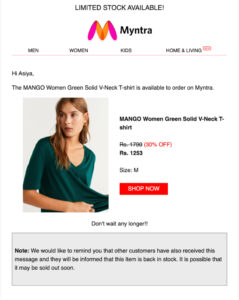
For instance, here’s how Myntra notified its customers regarding the availability of the product the customer was interested in. This way the customer got notified of the availability and might come back to shop from Myntra!
Once your customers have shopped with you does that end your interaction with them? No.
Once your customers have shopped with you it gives you an opportunity to assess their experience, understand their pain points, help them with refund, support, or maintenance, and take action on any negative feedback.
This is also the time when you nurture a long-lasting relationship with your customers and convert them into loyal customers.
Here’s how Amazon is leading in this retail CX strategy.
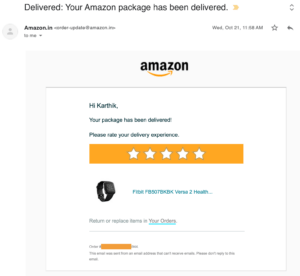
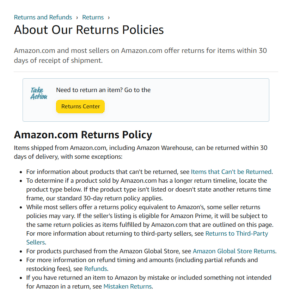
Ever wondered why beauty brands like Sephora and Glossier have such a huge and diverse customer base? It’s because instead of making their brand just a beauty brand they evolved themselves into a community.
Humans are made of emotions so when you involve your customers in your brand on a personal level and encourage them to engage with each other, you create a sense of community among them. This enables you to create a brand image that is rooted in emotions and bonds.
Nike also took this retail customer experience strategy seriously and created a community among sneakerheads and sports enthusiasts. Apart from their awesome shoes, they have successfully created a community for their members.
Their Nike Experiences are a collection of events organized across the globe that allow like-minded Nike members to get together and share their love for Nike. They have done collective running events, wellness camps, and many more events.
Nike also shares REAL stories of REAL people and community with all the members enabling them to feel like they belong to a community.

A popular brand that excels in this retail customer experience strategy is Zappos. We have all heard stories of Zappo’s awesome customer support team going above and beyond to deliver top-notch customer service to their customers.
There are many instances where they have perfected the art of customer service.
For example, Zappos helped a customer to help them find the nearest pizza places at midnight even if they don’t sell pizzas. They also delivered the shoes of a best man overnight and gave him a full refund and VIP account. Or how their longest customer service call was 10 hours long and it wasn’t about their product, the customer just wanted to talk to someone. And many more amazing stories.
Now pause and think.
Do you think these employees would have gone beyond their job role to deliver these kinds of exceptional services if they weren’t happy and satisfied with the company?
No, right?
In order to create a positive retail customer experience, you as a retail brand need to make sure that your employees are happy and they understand your vision and goals, especially your customer-facing staff because they are your first line of defense.
Measure your Employee’s Satisfaction with SurveySensum – Request a Demo
Do you know the Netflix of today looks a lot different than the Netflix of 1997 when it was founded? Reed Hastings and Marc Randolph, the founders of Netflix started Netflix by sending movies and TV series DVDs over mail.

In September 2002, according to the New York Times, Netflix sold around 190000 DVDs per day. Their venture was a huge success but do you think they stopped there? No, Netflix predicted that the world will soon replace DVDs with streaming videos so they changed their whole strategy.
The Netflix of today allows you to watch movies & TV series from anywhere you want, via any electronic device of your choice. Moreover, this serves as a prime example of a retail customer experience strategy. Netflix enhances your streaming journey by harnessing data analytics and algorithms to personalize your experience. This understanding of customer needs led to increased customer satisfaction, as subscribers were able to discover and enjoy content tailored to their interests.
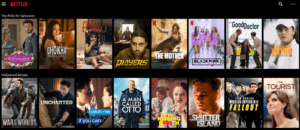
Now, how to anticipate your customer expectations like a pro?
Your customer’s shopping habits and behavior are not the same anymore. It has gone through some changes and evolved and it is now heavily influenced by the digital age. Embracing a multichannel buying experience is a vital retail customer experience strategy.
According to the Salesforce article, “Stats About the Retail Customer Journey”, 87% of shoppers begin their shopping journey with an online search before visiting any retail outlets.
Customers now want access to a multichannel buying experience. Creating a seamless multichannel buying experience is not only recommended but also advised as a part of creating a great retail experience.
According to Statista, in 2020 multichannel online retailers generated more than $350 billion in sales.
So how to create a multichannel buying experience for your customers?
For example, Nike offers the “Buy Online, Pick Up In-Store” option. With this option, customers can order online and pick them up at a nearby store. This feature combines the convenience of online shopping with the immediacy of in-store fulfillment.
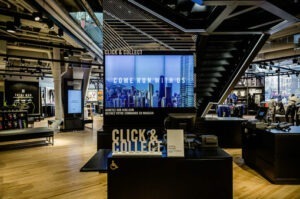
In a survey conducted by Statista titled, “Average Loyalty Program Membership Among US Consumers”, it was found that in 2022 consumers belonged to 16.6 membership programs on average but actively used a little less than half of those.
But why is that?
Now, how to fix that?
Learn from the successful retail customer experience examples of Amazon, Sephora, The North Face, Starbucks, etc.
So, to sum it all up, customer experience has become absolutely essential in the world of retail. It’s no longer something retailers can afford to overlook—it’s at the very core of their success.
Gather and use customer feedback at various touchpoints of your customer’s journey to gather insights into their needs, preferences, expectations, and shopping behavior. This data will help you in creating and improving retail customer experience strategies for your business.
Use can also use Surveysensum to:
Follow the 11 retail customer experience strategies explained above that have proved to be beneficial to many of our clients like, Lifestyle, PineLabs, Mercedes – Daimler, and many more!
